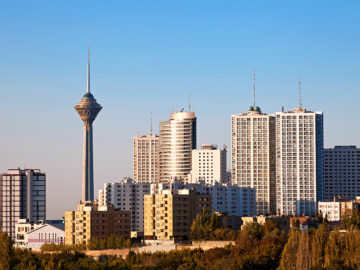
Located in the Arg Square in Southern Tehran, the Bazar has several corridors that are over 10 kilometers in length. Tehran’s bazaar is one of the most important places of trading and selling goods in Iran, and it is an amazing fundamental and economical structure. A market that its main structure is a heritage of the Qajar era.
When Agha Mohammad Khan of Qajar period was the king, the Bazaar started a time of booming that continued for several years. In these times, different segments of the Bazaar was restored, new sections were added and many buyers and sellers from all over Iran came here. Naser Al Din Shah, the Fourth Qajar King, ordered the construction of a portal that today is known as Grand Bazar. Without a doubt, Naser Al din Shah was the man that made the most changes in the Bazaar. The changes that made the tradesmen so powerful, they could influence the political decisions of the governmental officials. Although the development of Bazaar helped with the financial situation of the country, it made the rulers less powerful. When the money was at the hand of a group of traders then they would want a saying in the political decisions that affected them as well. So the power the king gave them was used against him and later his son when the traders of Bazaar became the main supporters of the oppositional groups that wanted constitution and limitation of Monarchy’s power.
Tehran’s bazaar is one of the most important places of trading and selling goods in Iran, and it is an amazing fundamental and economical structure. A market that its main structure is a heritage of the Qajar era.
The current architecture of the grand bazaar is very complex, the winding corridors, the traditional ventilation system in the ceiling, the decorations and sections of the bazaar all can prove the magnificent architecture used to build this bazaar. The place wasn’t always this complex. Tehran bazaar was developed over time, for example parts of the market was roofed due to summer heat. These developments also took place in the service spaces so that cafe, gymnasium, baths, mosques and religious site were made. There were constantly new parts constructed and added to the old part in order to trade goods for individual buyers. Gradually, there were special arcades for different type of products in the marketplace. The new sectors had their own bath and mosque in a way that they could run their feasts, mourning ceremonies, and other occasions.

One of the most important parts of the Old Market is Sabze Meydan (the green square) in the northern part of the market that dates back to the Safavid period. In the Qajar era, by the order of Amir Kabir, fundamental changes were applied to this square. This is the central place for gatherings to celebrate religious, political and social occasions. The renovation and refurbishing plan for the grand bazaar has been started over years, numerous activities have been happening such as: floor lamps, structure-building, the porch of the dome and roof and the building.

The grand bazaar of Tehran is on top list of all the visitors that come to Tehran from abroad and even other cities of Tehran. A very crowded and alive place which can take you to old days of Tehran. Grand bazaar of Tehran offers visitors a chance to enjoy good food as well with various traditional cuisine restaurants and fast food. The food here may not be very cheap but it is definitely worth your money because you will receive good quality food. These restaurants, which some date back to more than 100 years ago, show the visitors what authentic Persian meal is. Even one of the oldest pizzeria in Tehran is located in this market.

